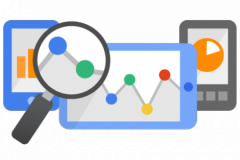Mobile technologies are emerging as a growth engine for small and medium enterprises (SME). Many studies have proved that SMEs who adopt mobile technologies to stay connected with customers and streamline operations are growing revenue 2X faster and developing 8X more jobs than follower and laggard SMEs. It means that Mobile e-commerce is exploding. Our generation is now comfortable not only with the mobile but paying online as well. Today’s faster technology and smoother interfaces have eliminated the e-commerce friction. There are many eye-opening proofs that show consumers now spend more time with online retail on mobile devices than desktop and laptop PCs. So developing an native eCommerce mobile app is an smart choice.
No matter how new technologies change our lifestyle, people are and will go to shop. Developing and designing mobile apps for e-commerce businesses has its own tricks. Below are all the building blocks needed to plan and develop your mobile e-commerce technology. Starting with the concepts, market insights, payment technology, analytics, and more.
UI Component
Mobile applications on smartphones and tablets and on mobile devices, in general, have increased the dependence of the user on icons and graphic elements for effective communication via the interface. Well-designed icons and graphics allow the user to recognise without the need of additional instructions the functions available on the mobile device in question. So the first thing that you need in your e-commerce app is the UI. If you have your designer good enough or you can take help from any design expert. Below are some of the popular links for different UI design library.
 Cocoa Control
Cocoa Control
It is one of the most famous open-source of UI component for iOS. It provides uncountable UI component to make any app attractive and user friendly.
 Android Arsenal
Android Arsenal
It provides a collection of libraries, tools and projects for Android developers. It is an android developer portal with tools, libraries, and apps and provides an uncountable UI designs component for android.
Webservice for the accessing data in your native eCommerce mobile app
As you are developing a native eCommerce mobile app, it means you are going to access data from any web server. So, after designing the UI the second important step is to have Webservices or the application services that allow the creation of applications which access the features or data of an operating system, application, or other service. This helps to fetch data from server and fill it in your application. This can of any framework depending on your choice. The popular frameworks for eccommerce are:
 Magento
Magento
Magento is an open-source e-commerce platform written in PHP. Magento is the most flexible full-featured e-commerce software available to all types of businesses. Magento is fully scalable to grow and change as your business does. Whether you need basic e-commerce features for your online store or advanced options to accommodate growth, Magento has a solution for your business.
 WooCommerce
WooCommerce
Woo-commerce is based on open source platform. Woo-commerce is a strong, extendable plugin that helps you sell anything efficiently. Woo-commerce integrates seamlessly with WordPress. It provides a good secure apis for any e-commerce store.
 PrestaShop
PrestaShop
Prestashop is based on open source platform. Prestashop is a strong, extendable plugin that helps you sell anything efficiently. It is very popular plateform for secure e-store.
Integration of Payment gateway in your native eCommerce mobile app
A payment gateway is an interface or outlet to your payment system. A digital gateway can be the screens and buttons of an online shopping cart that accepts input payment information. An analog gateway is a physical credit card reader. A payment gateway is important because it provides a secure path from the customer to your payment system. It does this by encrypting the data and handling the connection to the payment processor. Without a gateway, your credit card numbers and banking information would be at risk. Or you would need to build your own security systems. Following are the some popular payment sdks available, which help you to integrate the payment system in your app easily.
 PayPal
PayPal
PayPal is the faster, safer way to send money, make an online payment, receive money or set up a merchant account. Online money transfers serve as electronic alternatives to traditional paper methods like checks and money orders. PayPal is one of the world’s largest Internet payment companies.
 Google Wallet
Google Wallet
It is the fast, easy, and free way to send money to friends and family. Google Wallet is a peer-to-peer payments service developed by Google that allows people to send and receive money from a mobile device or desktop computer at no cost to either sender or receiver.
 Apple Pay
Apple Pay
Apple Pay is a mobile payment and digital wallet service by AppleInc. that lets users make payments using the iPhone 6, 6 Plus, iPhone SE, and later, Apple Watch-compatible devices (iPhone 5 and later models), iPad Air 2, iPad Pro and iPad Mini 3 and later.
Analytics for Mobile App eCommerce
The web has obsessed over sales funnels and it’s just as important to track and optimize on mobile. Your app will have some sort of checkout flow, and it’s important to understand how users are navigating your app. Those already using Google Analytics on the web will likely want to choose Google Mobile Analytics. Then you can see a full profile of your business from one dashboard. Flurry and MixPanel are two other very good and well-adopted solutions.
 Google Mobile Analytics
Google Mobile Analytics
Use Google Analytics for Mobile Apps to measure and optimize user acquisition and engagement with mobile apps. It measures the impact your app has on your business. App measurement in Google Analytics helps you measure your app’s full value and the impact it has on your business.
 Flurry Analytics
Flurry Analytics
It allows to track the apps’ performance anytime, anyplace, anywhere.It allows you to view data for multiple apps at one time to gain a holistic view of performance for any company.
 Parse Analytics
Parse Analytics
It provides insight into user interactions around push notifications. It gives a look at all API Requests passing through Parse. It tracks arbitrary events with an arbitrary set of dimensions.
Conlusion
Above described points are the essential elements for developing or building a good native eCommerce mobile app. There are many mobile apps for eCommerce are available in the market, you can take help from them and build an idea for your own app’s functionality and features . If you need more assistance and idea about setting up your mobile app, feel free to contact us.
 Clovia
Clovia
One of the leading and fastest growing lingerie & nightwear shopping brands in India, Clovia is committed to being a woman’s one stop destination for all her lingerie needs. Being an exclusive lingerie and nightwear store, Clovia offers a wide variety of bras, briefs/panties and nightwear which are not only high on style quotient but are also comfortable.
 Myntra Online Shopping App
Myntra Online Shopping App
Swipe, select and shop! It’s fashion on the go with the all-new Myntra mobile app. Take the world of online shopping with you everywhere you go and get all your favorite fashion merchandise by top brands.Browse through 2,30,000+ product styles from 1600+ brands instantly on the Myntra shopping app

MagentoShop- A Shopping App
Looking for a native Magento mobile app builder (iOS/Android) for your Magento based online marketplace? Try the 30-day free trial of our Magento mobile app, go mobile commerce in a few hours and increase your sales exponentially. No Setup Fee, Pay as you go pack at just $69/month.
 WooShopee – Woocommerce App
WooShopee – Woocommerce App
Looking for a native Woocomerce mobile app builder (iOS/Android) for your Woocommerce based online marketplace? Try the 30-day free trial of our Magento mobile app, go mobile commerce in a few hours and increase your sales exponentially. No Setup Fee, Pay as you go pack at just $69/month.


